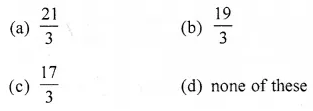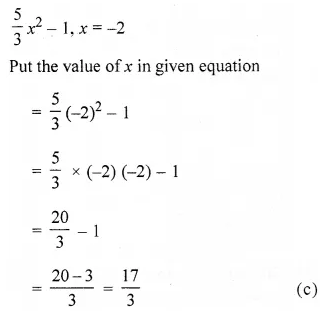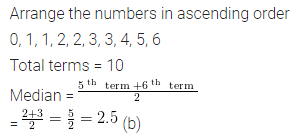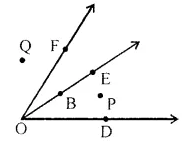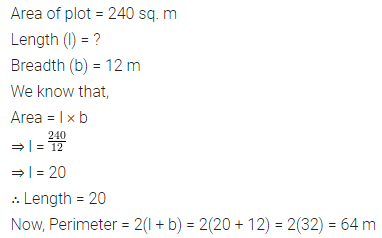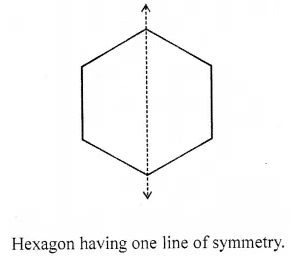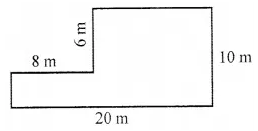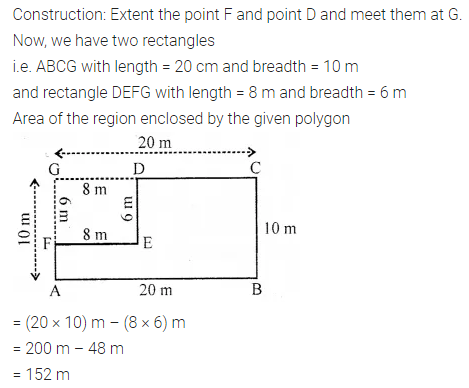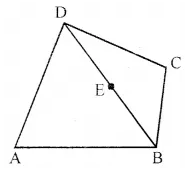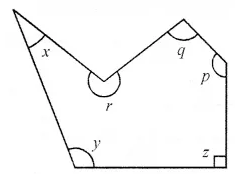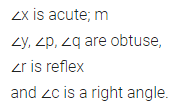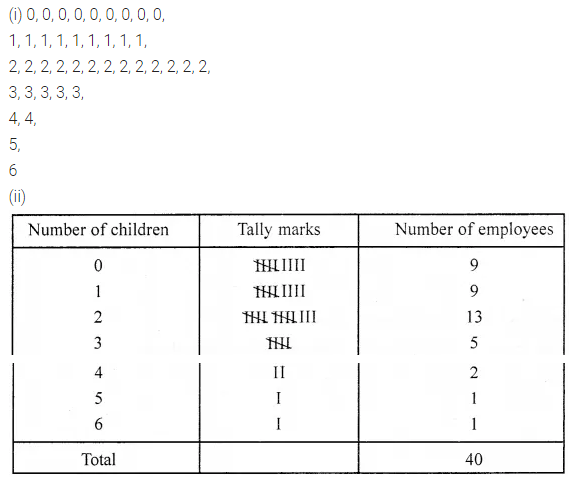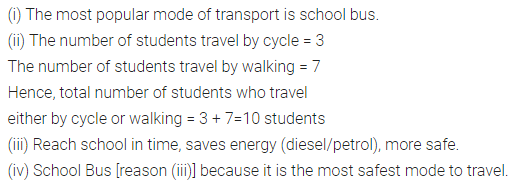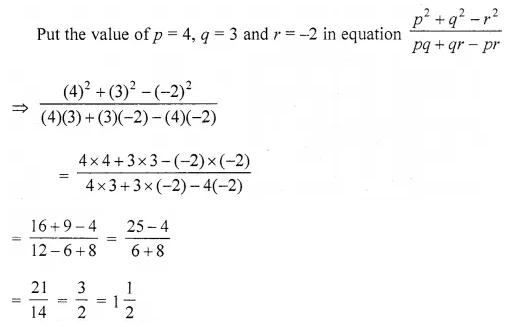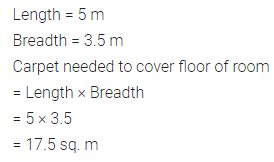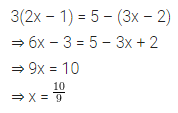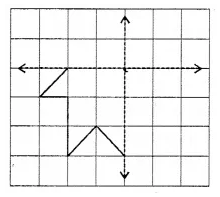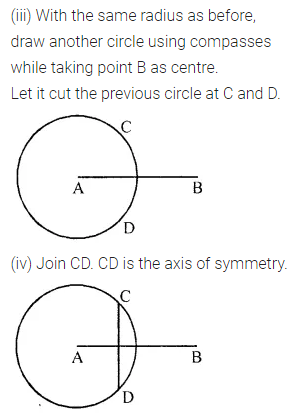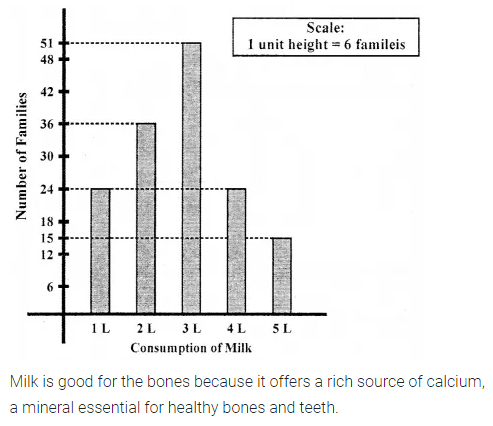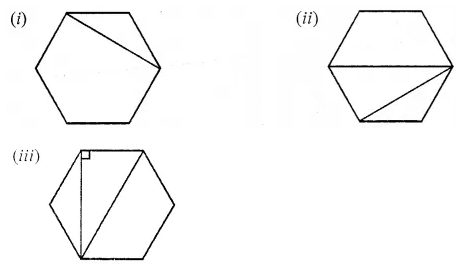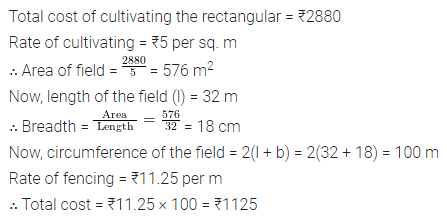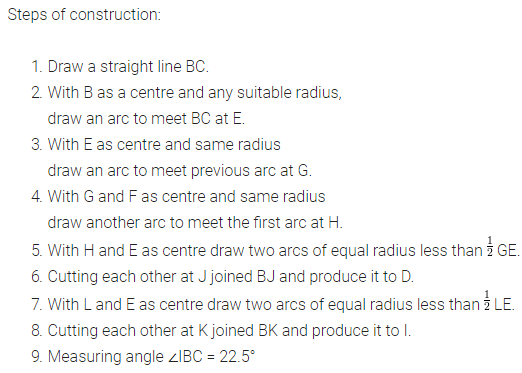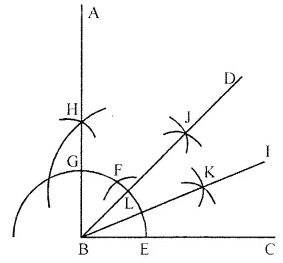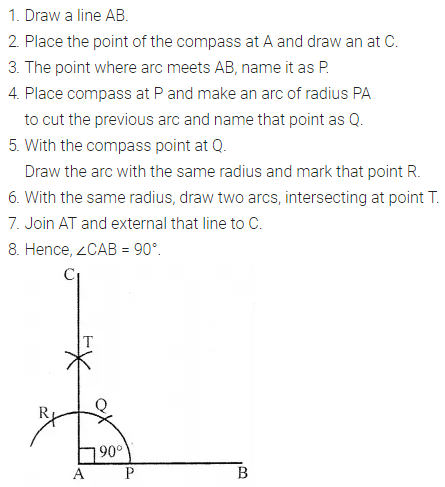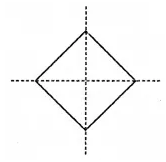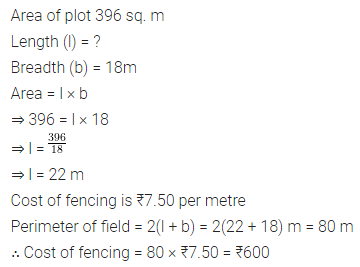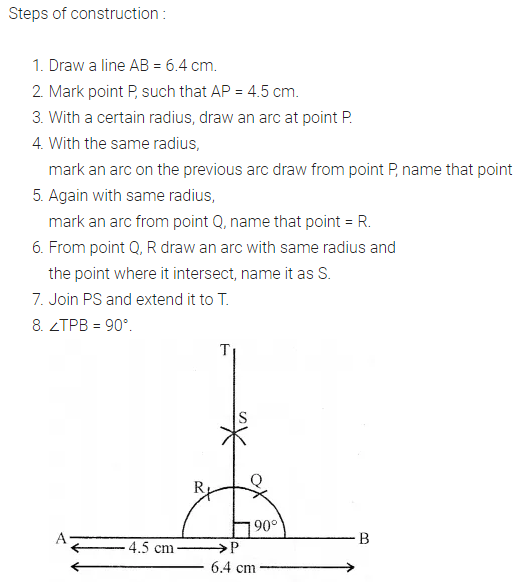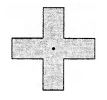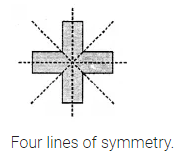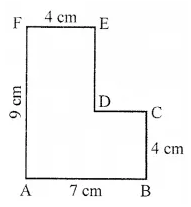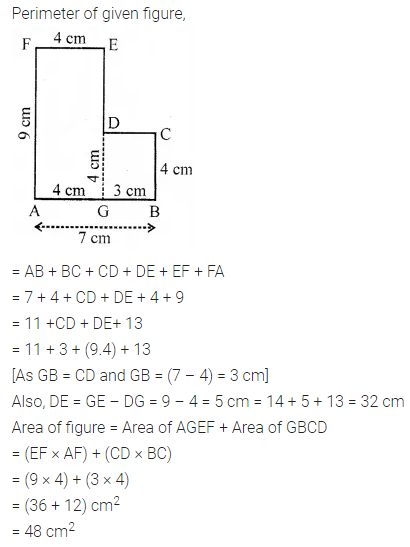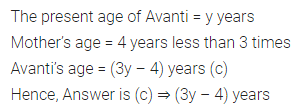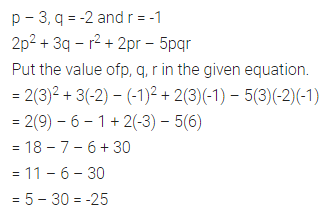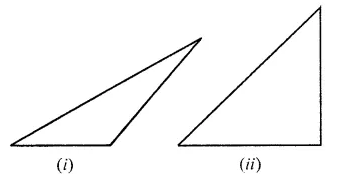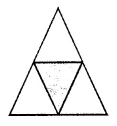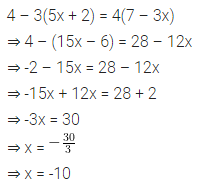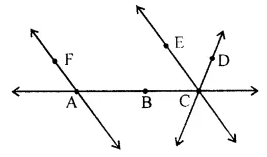ML Aggarwal Class 9 Solutions Chapter 1 Rational Numbers Ex 1.2 for ICSE Understanding Mathematics acts as the best resource during your learning and helps you score well in your exams.
ML Aggarwal Class 9 Solutions for ICSE Maths Chapter 1 Rational Numbers Ex 1.2
Question 1.
Prove that \(\sqrt{5}\) is an irrational number. Hence show that \(\frac {2}{3}\)\(\sqrt{5}\) is an irrational number.
Solution:
Let \(\sqrt{5}\) is a rational number
Let \(\sqrt{5}\) = \(\frac {p}{q}\) where p and q are integer and q > 0, p and q have no common factor except 1
Squaring both sides

⇒ p2 = 5q2
∴ 5q2 is divisible by 5
∴ p2 is also divisible by 5
⇒ p is divisible by 5
Let p = 5k where k is an integer
squaring both sides
p2 = 25 k2
⇒ 5q2 = 25k2
⇒ q2 = 5k2
∴ 5k2 is divisible by 5
∴ q2 is also divisible by 5
⇒ q is divisible by 5
∴ p and q are both divisible by 5
our supposition is wrong as p and q have no common factor
∴ \(\sqrt{5}\) is an irrational number
Now in \(\frac {2}{3}\)\(\sqrt{5}\) , \(\frac {2}{3}\) is a rational number and \(\sqrt{5}\) is an irrational number.
But product of a rational number and an irrational number is also an irrational number
∴ \(\frac {2}{3}\)\(\sqrt{5}\) is an irrational number.
Hence proved.
Question 2.
Prove that \(\sqrt{7}\) is an irrational number.
Solution:
Let \(\sqrt{7}\) is a rational number
Let \(\sqrt{7}\) = \(\frac {p}{q}\)
Where p and q are integers, q ≠ 0 and p and q have no common factor
Squaring both sides,

⇒ p2 = 7q2
∴ p2 is a multiple of 7
⇒ p is multiple of 7
Let p = 7 m
Where m is an integer
∴ Then (7 m)2 = 7q2 ⇒ 49 m2 = 7q2
⇒ q2 = 7 m2
∴ q2 is multiple of 7
⇒ q is multiple of 7
p and q both are multiple of 7
Which is not possible
Hence \(\sqrt{7}\) is not a reational number
∴ \(\sqrt{7}\) is an irrational number
Question 3.
Prove that \(\sqrt{6}\) is an irrational number.
Solution:
Let \(\sqrt{6}\) is a rational number
and \(\sqrt{6}\) = \(\frac {p}{q}\) where p and q are integers and q ≠ 0 and have no common factor

= p2 = 6q2 ………(i)
∴ p2 is divisible by 2 which is a prime
p is also divisible by 2
Let p = 2k where k is an integer
∴ Substituting the value of p in (i)
(2k)2 = 6q2 ⇒ 4k2 = 6q2
⇒ 2k2 = 3q2
∴ q2 is divisible by 2
⇒ q is divisible
p and q both are divisible by 2
Which is not possible as p and q both have
no common factor
Hence \(\sqrt{6}\) is an irrational number
Question 4.
Prove that \(\frac{1}{\sqrt{11}}\) is an irrational number.
Solution:
Let \(\frac{1}{\sqrt{11}}\) is a rational number
Let \(\frac{1}{\sqrt{11}}\) = \(\frac {p}{q}\) where p and q are integers
and q ≠ 0 and have no common factor Squaring both sides

∴ q2 is divisible by 11
⇒ q is divisible by 11
Let q = 11k where k is an integer squaring
q2 = 121k2
Substituting the value of q in (i)
∴ 121k2 = 11p2
⇒ 11k2 = p2
∴ p2 is divisible by 11
⇒ p is divisible by 11
∴ p and q both are divisible by 11
But it is not possible
∴ \(\frac{1}{\sqrt{11}}\) is an irrational number
Question 5.
Prove that \(\sqrt{2}\) is an irrational number. Hence show that 3 – \(\sqrt{2}\) is an irrational number.
Answer:
(i) Let \(\sqrt{2}\) be a rational number, then by definition
\(\sqrt{2}\) = \(\frac {p}{ q}\) where p, q are integers ,q>0, p and q have no common factor.
Since, 12 – 1, 22 = 4 and 1 < 0 < 4, It follows that
![]()
In particular, if q = 1, then we get 1 < p < 2 But, there is no integer between 1 and 2. ∴ q ≠ 1 so q > 1

As 2 and q are both integers, 2q is an integer. On the other hand, q > 1 and p,q have no common factor. So p2 and q have no common factor. It follows that \(\frac {p}{q}\) is not an integer. Thus, we arrive at a contradiction. Hence \(\sqrt{2}\) is not a rational number.
If possible, let 3 – \(\sqrt{2}\) is an rational number say r (r ≠ 0), then
3 – \(\sqrt{2}\) = r ⇒ – \(\sqrt{2}\) = r – 3 ⇒ \(\sqrt{2}\) = 3 – r
As r is a rational number and r ≠ 0, Then 3 – r is rational
⇒ \(\sqrt{2}\) is rational, which is wrong, Hence 3 – \(\sqrt{2}\) is irrational number.
Question 6.
Prove that \(\sqrt{3}\) is an irrational number. Hence, show that \(\frac{2}{5}\)\(\sqrt{3}\) is an irrational number.
Solution:
Let \(\sqrt{3}\) is a rational number
and let \(\sqrt{3}\) = \(\frac{p}{q}\) where p and q are integers,
q ≠ 0 and have no common factors both sides
Squaring both sides

p2 is divisible by 3
⇒ p is divisible by 3
Let p = 3k where k is an integer
Squaring both sides
p2 = 9k2
Substituting the value of p2 in (i)
9k2 = 3q2 ⇒ q2 = 3k2
∴ q2 is divisible by 3
⇒ q is divisible by 3
∴ p and q both are divisible by 3
But it is not pissible
∴ \(\sqrt{3}\) is an irrational number
Now in \(\frac{2}{5}\)\(\sqrt{3}\)
2 and 5 both are rational numbers.
∴ \(\frac{2}{5}\)\(\sqrt{3}\) is irrational number as product of rational and irrational is irrational
Hence \(\frac{2 \sqrt{3}}{5}\) is an irrational number.
Question 7.
Prove that √5 is an irrational number.
Hence, show that -3 + 2√5 is an irrational number.
Answer:
Let \(\sqrt{5}\) is a rational number
and let \(\sqrt{5}\) = \(\frac {p}{q}\) where p and q are integers,
q ≠ 0 and have no common factors both sides
Squaring both sides

p2 is divisible by 5
⇒ p is divisible by 5
Let p = 5k where k is an integer
Squaring both sides
p2 = 25k2
Substituting the value of p2 in (i)
25k2 = 5q2 => q2 = 5k2
q2 is divisible by 5
⇒ is divisible by 5
∴ p and q both are divisible by 5
But it is not possible
\(\sqrt{5}\) is an irrational number
Now in – 3 + 2\(\sqrt{5}\)
– 3 and 2 both are rational numbers
∴ 2\(\sqrt{5}\) is irrational number as product of a rational and irrational is irrational
Hence – 3 + 2\(\sqrt{5}\) is an irrational number
Question 8.
Prove that the following numbers are irrational:

Answer:
(i) Suppose that 5 + \(\sqrt{2}\) is rational number Say r (r ≠ 0) then
5 + \(\sqrt{2}\) = r \(\sqrt{2}\) = r – 5
As r is rational number, then r – 5 is also rational number.
⇒ \(\sqrt{2}\) is rational number, which is wrong,
∴ our supposition is wrong.
Hence, 5 + \(\sqrt{2}\) is irrational number.
(ii) 3 – 5\(\sqrt{3}\)
Suppose 3 – 5\(\sqrt{3}\) is a rational
and let 3 – 5\(\sqrt{3}\) = r
⇒ 5\(\sqrt{3}\) = 3 – r = > 73 = \(\sqrt{3}=\frac{3-r}{5}\)
∵ r is a rational number 3-r
∴ \(\frac{3-r}{5}\) is also a rational number
But \(\sqrt{3}\) is an irrational number
∴It is not possible
∴ 3 – 5\(\sqrt{3}\) is an irrational number
(iii) 2\(\sqrt{3}\) – 7
Let 2\(\sqrt{3}\) – 7 is a rational number
and let 2\(\sqrt{3}\) – 7 = r
= > 2\(\sqrt{3}\) = r + 7 ⇒ \(\sqrt{3}=\frac{r+7}{2}\)
∴ r is a rational number
∴ \(\frac{r+7}{2}\) is also a rational number
But \(\sqrt{3}\) is an irrational number
∴ It is not possible
2\(\sqrt{3}\) – 7 is an irrational number
(iv) \(\sqrt{2}\) + \(\sqrt{5}\)
Suppose \(\sqrt{2}\) + \(\sqrt{5}\) isa rational number and
let x = \(\sqrt{2}\) + \(\sqrt{5}\)
Squaring both sides,

\(\sqrt{10}\) is a rational number
But it is not true as \(\sqrt{10}\) is an irrational number
∴ Our supposition is wrong
∴ \(\sqrt{2}\) + \(\sqrt{5}\) is an irrational number.













